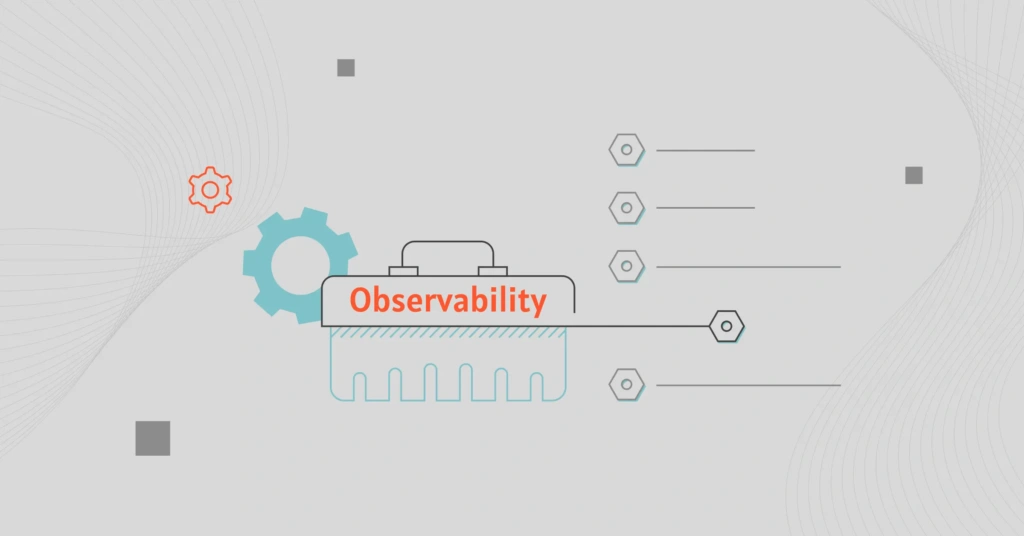Cloud observability tools offer visibility into your cloud infrastructure. They collect data from various sources to help you understand your applications’ performance. The tools enable you to monitor, optimize, and troubleshoot your cloud environment.
In this guide, we’ll share why cloud observability is important and the best tools to consider.
Here’s Why You Need A Cloud Observability Tool
If your organization already uses a cloud cost management tool, you might wonder why you also need a cloud observability tool. While those tools optimize and manage your costs, visibility and observability tools offer more.
- Performance tracking. These tools aid in monitoring the real-time performance of your applications and services.
- Rapid issue detection. The tools allow for prompt identification of issues in your cloud environment. This helps reduce application downtime.
- Improved troubleshooting. You can troubleshoot issues and identify the underlying cause by gaining in-depth insights.
- Increased resource efficiency. Observability tools offer information to help maximize cloud resource use. They help avoid inefficiencies and optimize cloud costs.
- Robust security. By observing logs and metrics, these tools help in identifying unusual activities that may signal security risks.
- Better user experience. Observability tools contribute to a positive user experience by ensuring smooth-running applications.
- Compliance and reporting. They help ensure adherence to industry regulations by providing the necessary data for audits and reports.
- Scalability insights. Cloud observability tools help you understand how your applications scale under various loads. They offer valuable insights for capacity planning.
- Team collaboration. Observability tools facilitate a shared view of the cloud environment. This fosters collaboration between IT, DevOps, FinOps, and engineering teams.
- Proactive management. By using predictive analytics, you can predict issues in advance and take precautions.
Here are some observability tools you’ll want to consider.
1. CloudZero
CloudZero offers comprehensive cloud observability that goes beyond basic monitoring. The platform provides granular cost visibility, allowing users to delve deeper into their cloud costs. With CloudZero, you can track where your funds are allocated in detail. This visibility helps identify cost drivers and areas for spending optimization. By breaking down your cloud costs, you can make informed decisions and reduce cloud waste.
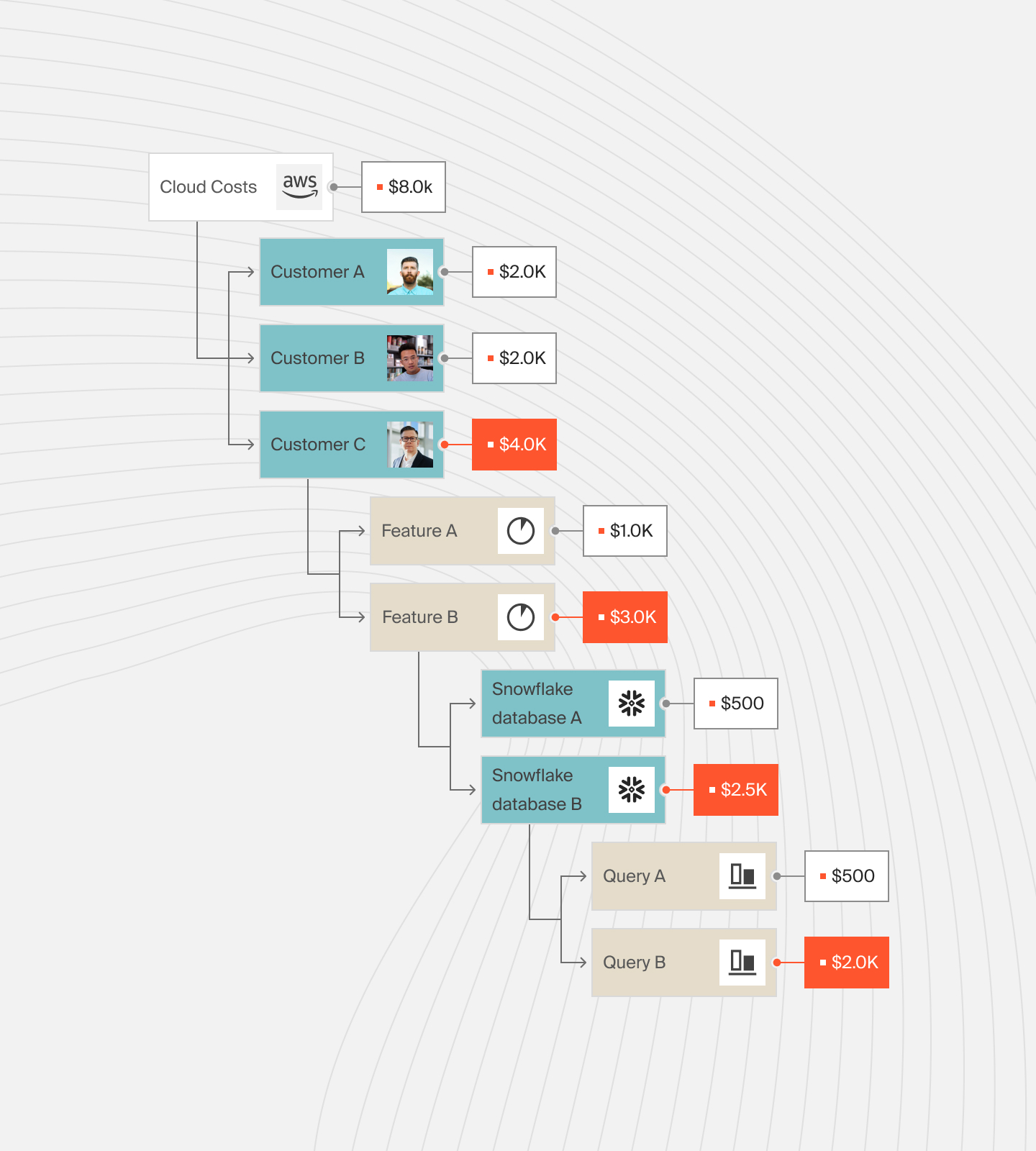
Controlling cloud costs through discounts is a smart strategy. CloudZero’s discount analytics simplify this process. The platform analyzes your usage patterns. It identifies opportunities to save with reserved instances, savings plans, and other discount programs.
You can visualize your savings and learn how to optimize your discounts further. CloudZero’s discount insights help you get the best value from your cloud investments.
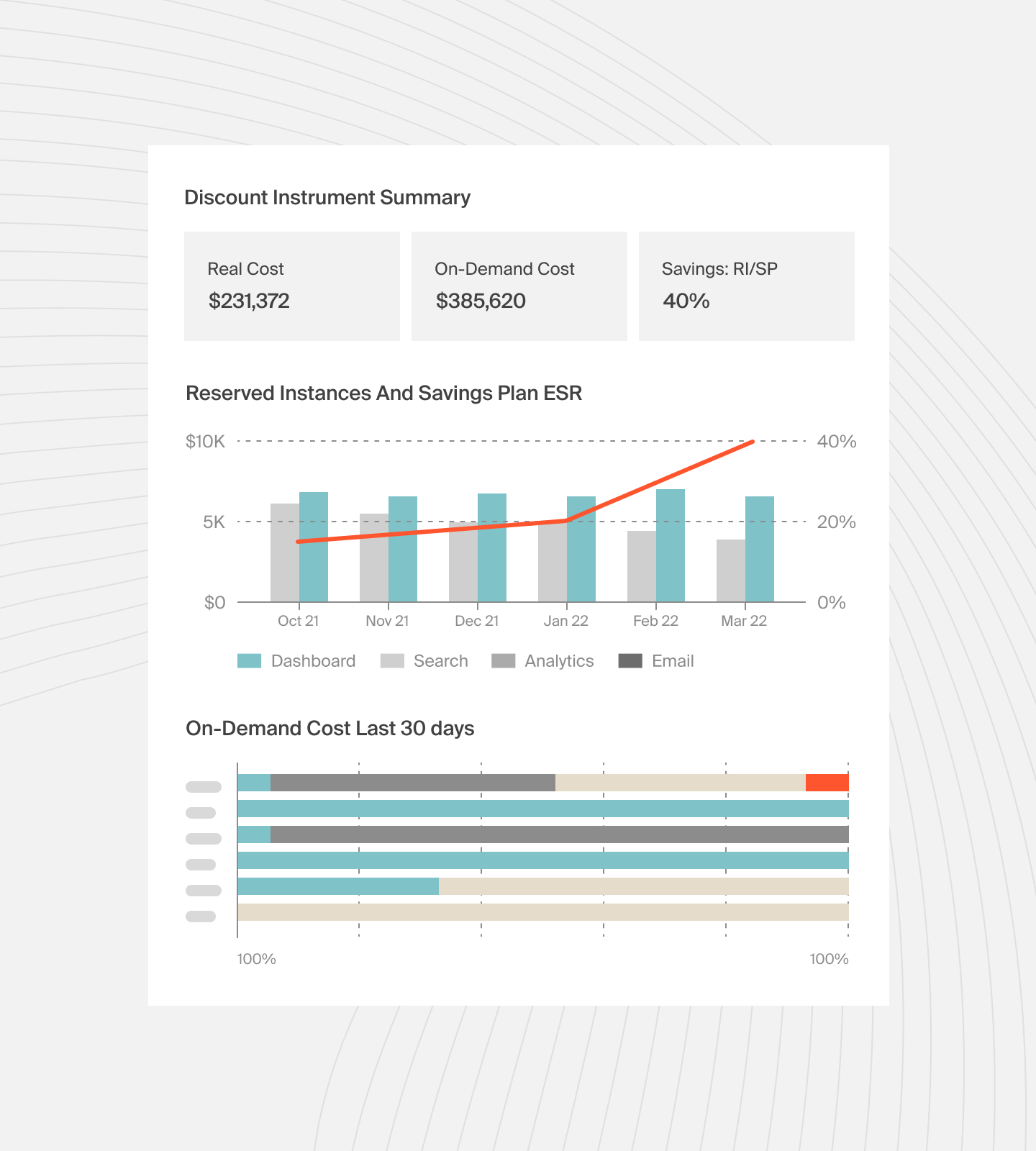
Understanding the cost per customer is crucial for any business using cloud services. CloudZero makes it easy to calculate and analyze this critical metric. The platform links your cloud costs with customer usage. This gives you a clear picture of each customer’s costs.
The data is invaluable for pricing strategies, customer segmentation, and identifying high-cost customers. Calculating your cost per customer helps you make strategic decisions to increase profitability and customer satisfaction.
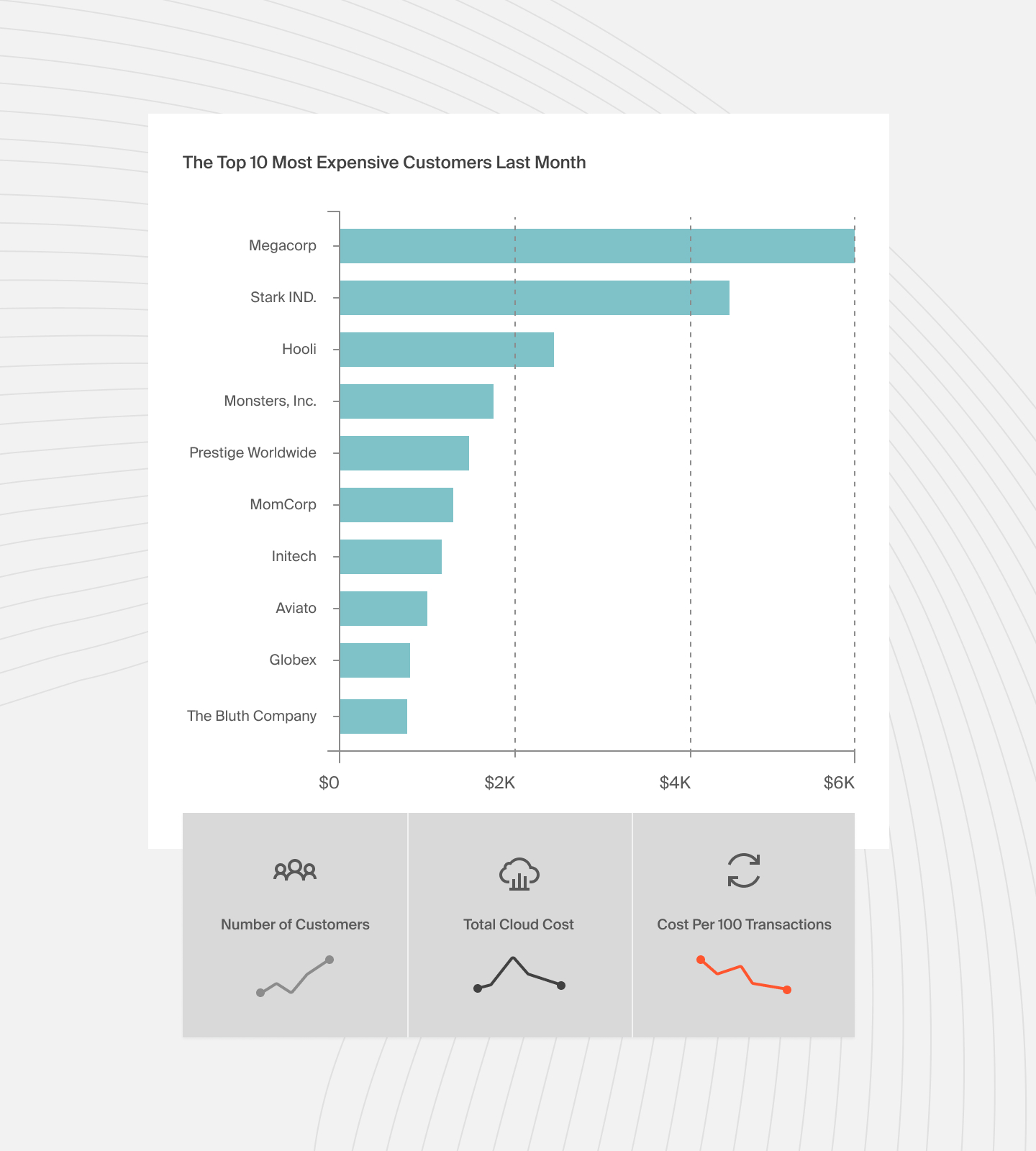
2. Datadog
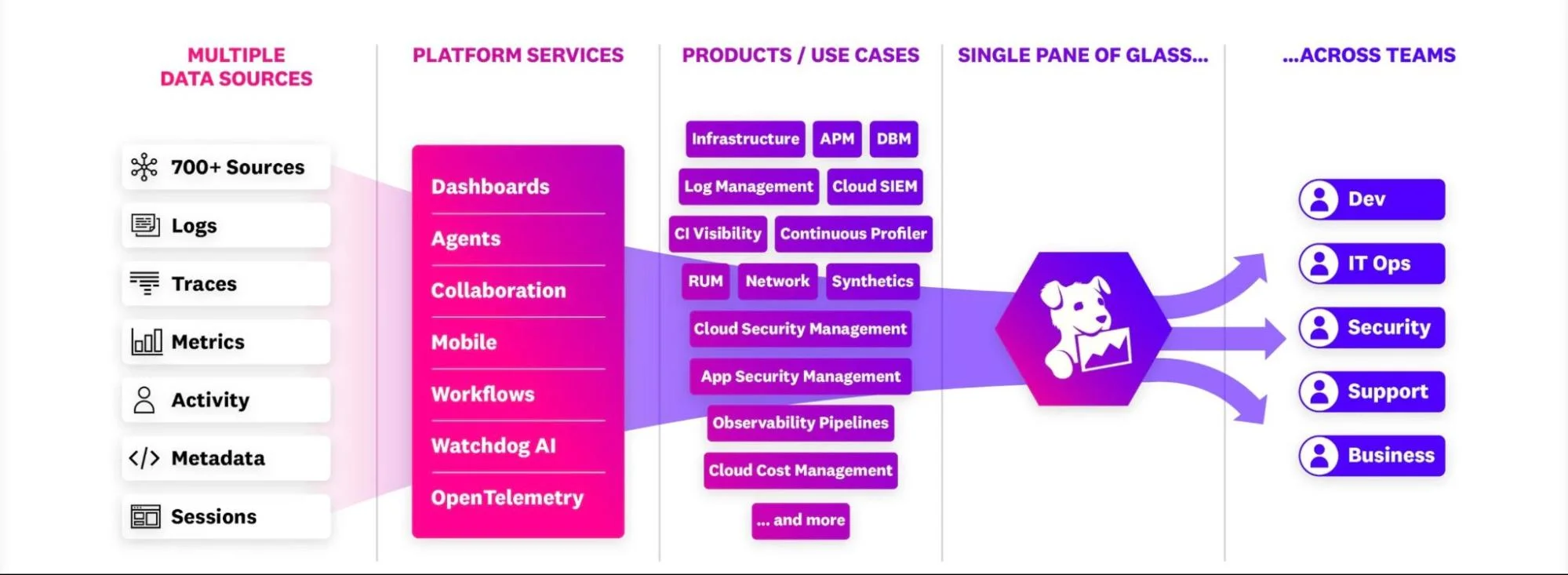
Datadog is an observability tool with robust monitoring, security, and analytics features. With a market share of 51.82% in the data center management industry, Datadog is king in cloud observability.
Datadog offers full-stack visibility by collecting and matching data from over 700 integrations. This allows you to monitor the performance and health of your entire environment in one unified platform.
Its major features are real-time monitoring, advanced logging, and log data analysis. Its AI-powered anomaly detection helps identify and resolve issues before they escalate. The tool also supports customizable dashboards and visualizations that simplify data analysis.
Datadog’s Quality Gates improves code quality monitoring. This feature intervenes during the code merging process to stop the integration of code that does not meet set quality standards. This ensures that only top-quality code is integrated into your project.
Teams can create customized regulations that are in line with their objectives. This ensures the code adheres to high standards, operates without flaws, and upholds security.
Datadog is like the heavyweight champion of the cloud observability world. If you decide it is overkill for your observability needs, see the following Datadog alternatives. We also compiled a guide to Datadog cost management that’ll help you understand and manage your costs better.
3. Amazon CloudWatch
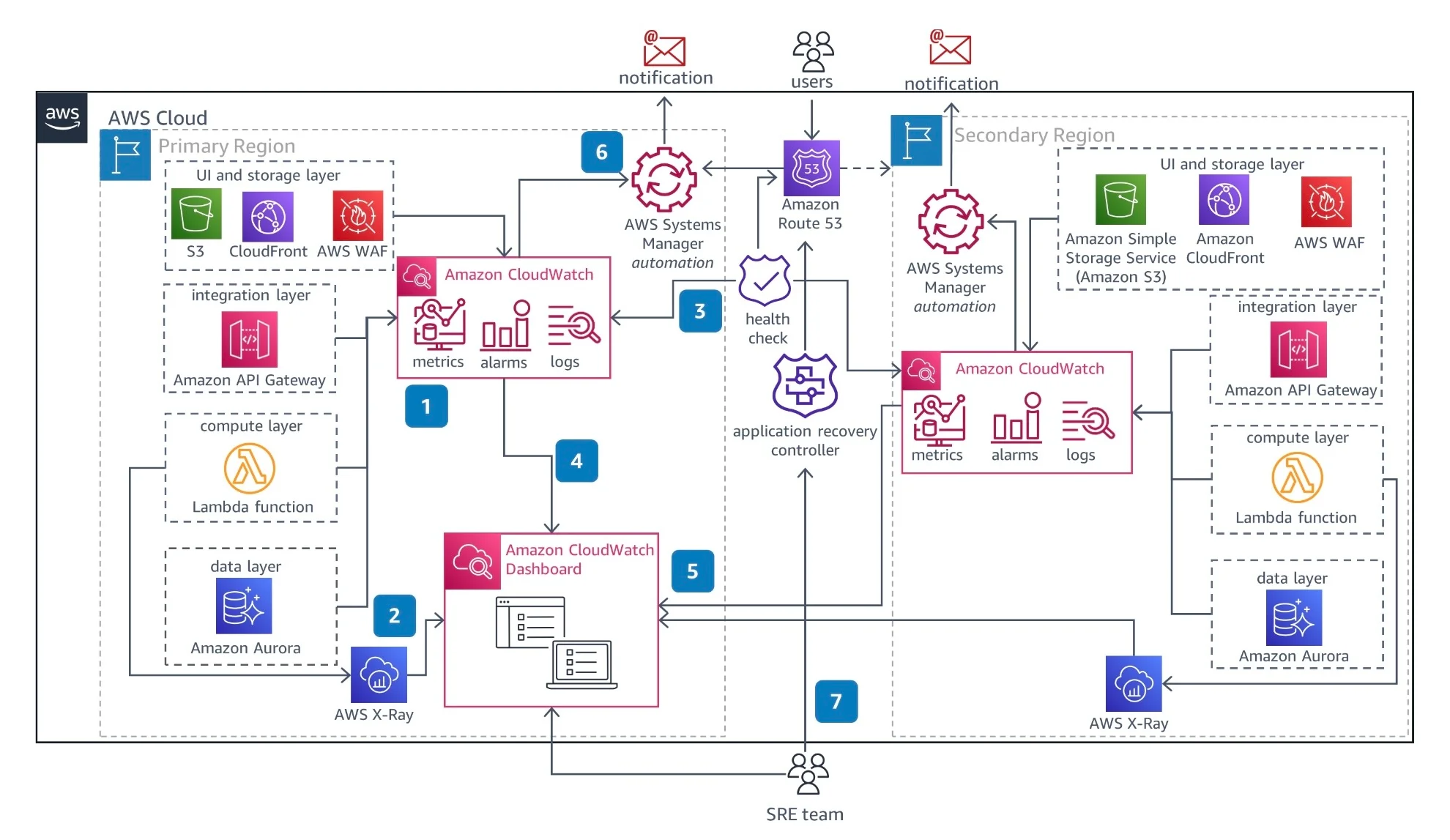
Amazon CloudWatch is an AWS observability tool. It collects logs, metrics, and events from AWS resources, applications, and on-premises servers. Its unified view of your infrastructure helps identify and resolve issues quickly. Users can set alerts, create dashboards, and gain knowledge to maintain and improve performance.
CloudWatch integrates with various AWS services, enabling users to monitor everything from individual instances to clusters. It works with Amazon EKS to offer visibility into Kubernetes cluster performance. Along with Amazon DynamoDB, CloudWatch monitors database activity and performance metrics.
Amazon CloudWatch also integrates with CloudZero to manage container costs in AWS. The CloudZero Kubernetes agent collects performance metrics from applications running in AWS EKS or native Kubernetes on EC2.
These metrics are sent to CloudWatch Logs. CloudZero then aggregates this data and pulls it into its platform. Access is managed via a cross-account role, connecting the account to CloudZero as a Resource Account. This integration helps allocate container costs.
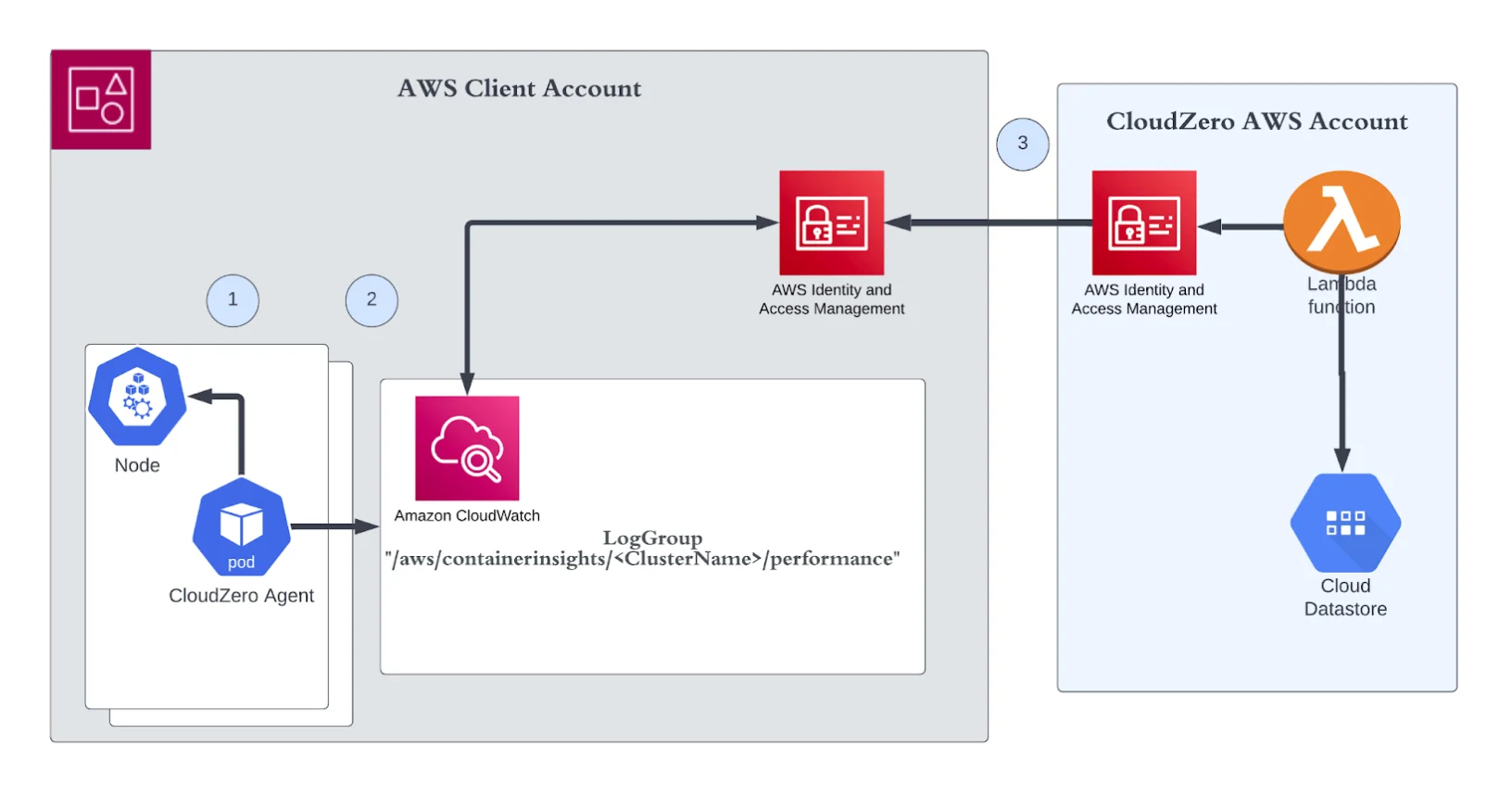
4. KubeSphere
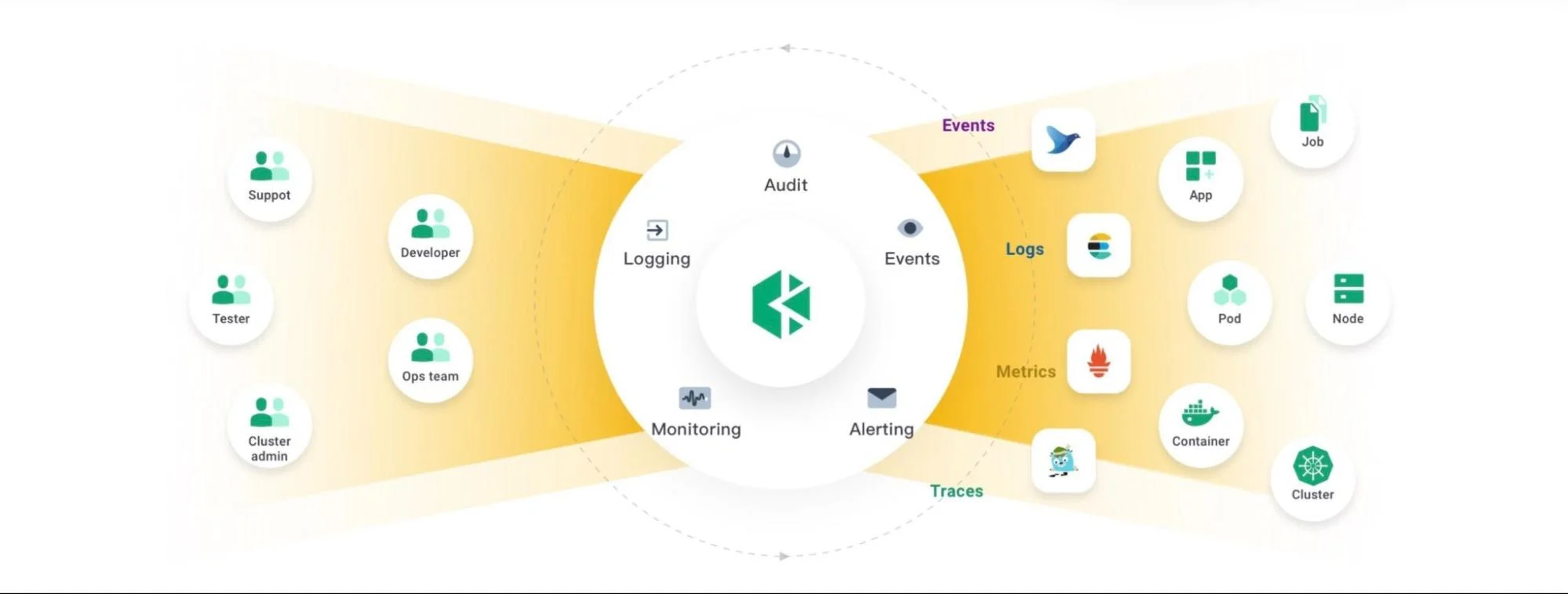
KubeSphere is an open-source, enterprise-level container management platform that streamlines Kubernetes operations. It integrates with Kubernetes, DevOps, and microservices to offer a unified environment.
KubeSphere enhances Kubernetes environments with a centralized observability platform. It monitors the Kubernetes control plane and cluster nodes, as well as CPU, memory, network, and storage for applications.
Users can rank resource consumption on a node, workspace, or project basis. The platform’s service component monitoring detects and resolves component issues. What’s more, users can create custom dashboards for their specific needs with custom metrics support.
KubeSphere’s log management boosts security in multi-tenant environments. It allows tenants to access only their log data and supports multi-level log queries. This enables users to drill down from projects to containers and keywords.
5. ProsperOps
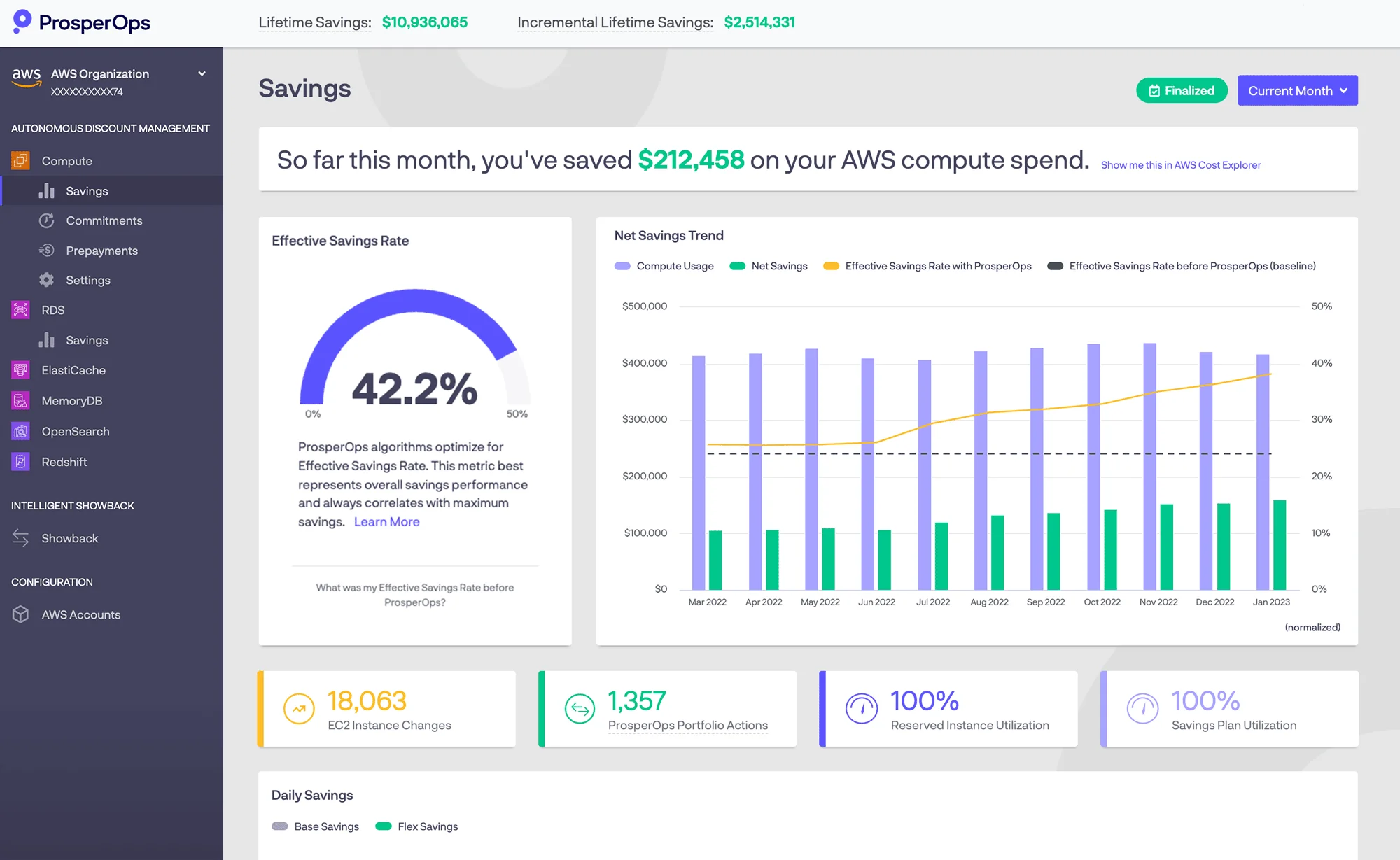
ProsperOps manages AWS pricing models, Reserved Instances (RIs), and Savings Plans, to increase savings while reducing the risk of long-term commitments.
ProsperOps employs sophisticated algorithms to analyze historical workload trends and fluctuations in demand. It then calculates which 1-year and 3-year Reserved Instances to buy, thus balancing cost savings with commitment risks. As usage stabilizes, ProsperOps leans towards buying more 3-year Reserved Instances to save more. This approach can reduce AWS costs by as much as 72%.
ProsperOps’ automation optimizes Reserved Instances for maximum savings and risk control. The platform adjusts the RI coverage to match usage patterns. ProsperOps will not buy new RIs if usage decreases and will let current commitments end, aligning with reduced usage.
The tool also integrates with AWS to autonomously manage EC2, Lambda, and Fargate services. It also supports RDS, ElastiCache, MemoryDB, Redshift, and OpenSearch. This integration supports cost optimization for different AWS services with minimal management.
6. Xosphere
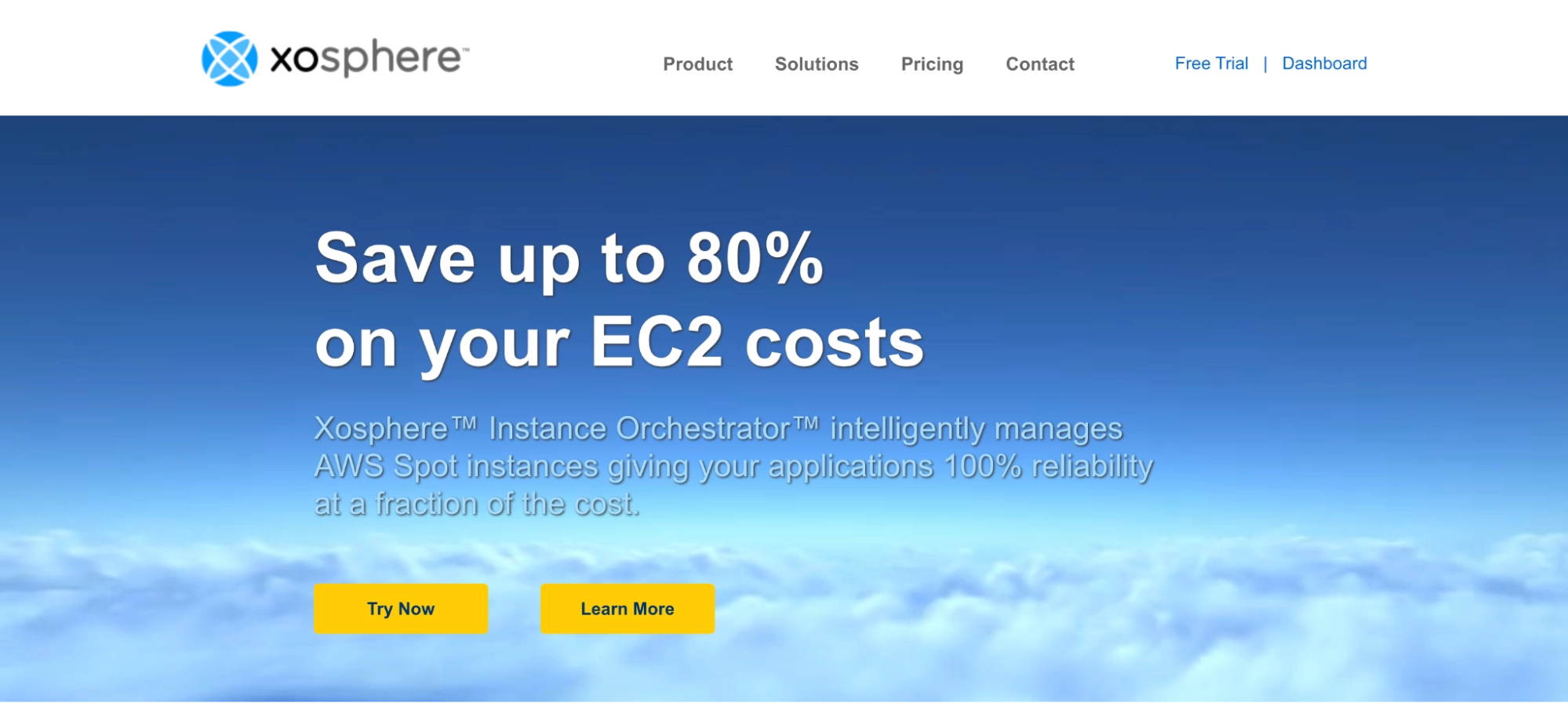
Xosphere helps businesses optimize their AWS EC2 costs by managing Spot Instances. These instances come with considerable discounts compared to On-Demand instances. By utilizing these affordable resources, Xosphere can help businesses cut their EC2 costs by 80-90%.
Xosphere monitors spot instance usage by tracking performance and availability in real time. This helps keep applications running smoothly. The platform works with Amazon Auto Scaling to automatically switches between Spot and On-Demand instances based on availability and pricing. This keeps your applications accessible.
Xosphere also partners with CloudZero and ProsperOps to offer advanced cost insights and resource use data. This partnership enables users to tie spot instance usage with financial metrics to optimize cost performance.
7. Dynatrace
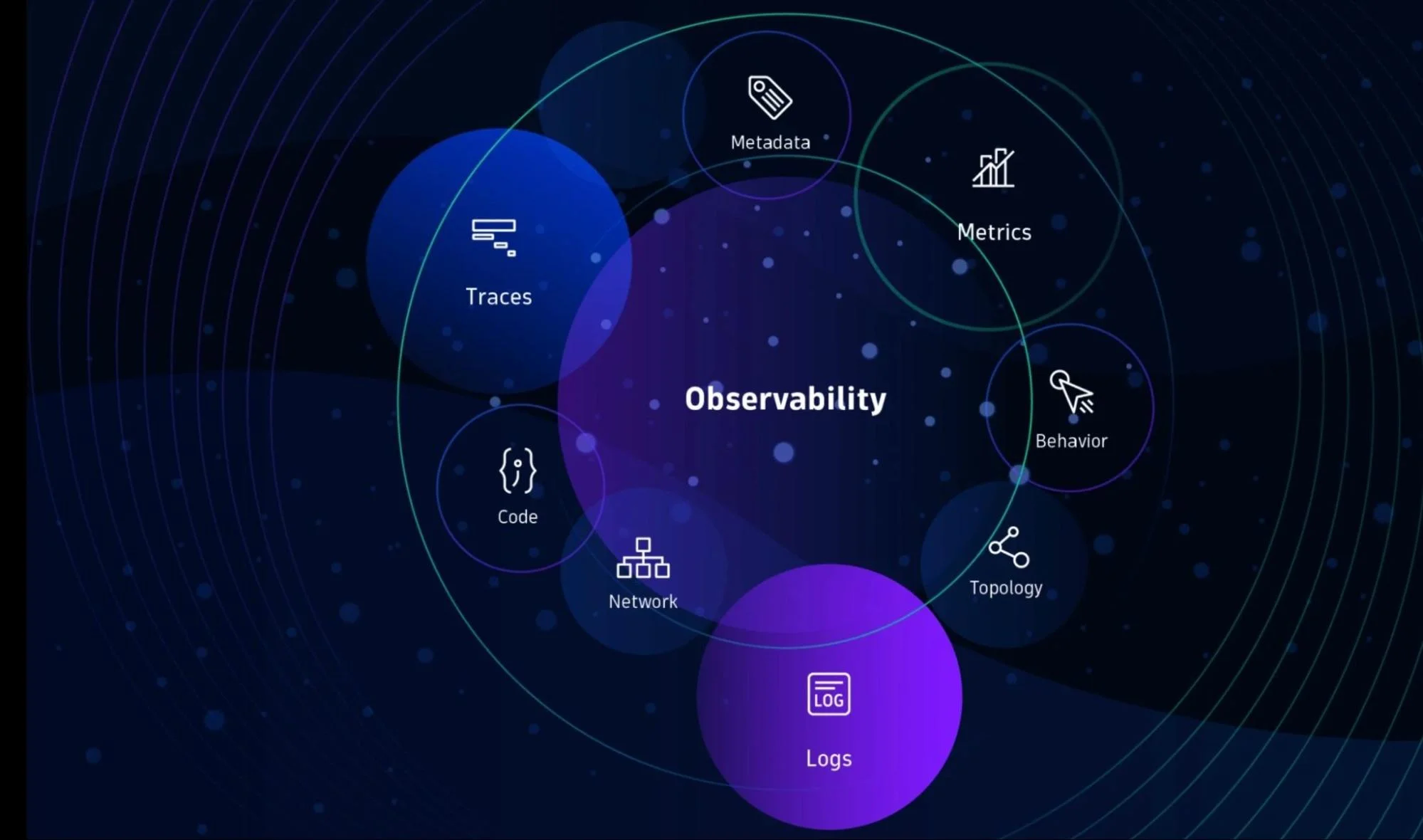
Dynatrace enhances observability by incorporating contextual details. It goes beyond traditional metrics, logs, and traces to include user experience, security, and topology data. This provides a full context of the observed data, from user impact to entity interdependencies.
Dynatrace’s AI solution, Davis®, automatically detects anomalies and analyzes root causes. This reduces the mean time to resolution (MTTR) and facilitates rapid problem-solving. Its automation ensures scalability and coverage without manual configuration.
OneAgent by Dynatrace automatically detects and instruments various activities, including applications, containers, services, processes, and infrastructure components. This offers immediate high-quality data observability.
Dynatrace also collaborates with Google and Microsoft on the OpenTelemetry project to expand cloud observability coverage. This partnership improves Dynatrace’s capacity for extensive analysis in various cloud environments.
Real-time topology mapping consolidates dependencies between all observability data. It merges metrics, logs, user experience, and security data into a unified, real-time topology map, eliminating limited visibility.
8. AppDynamics
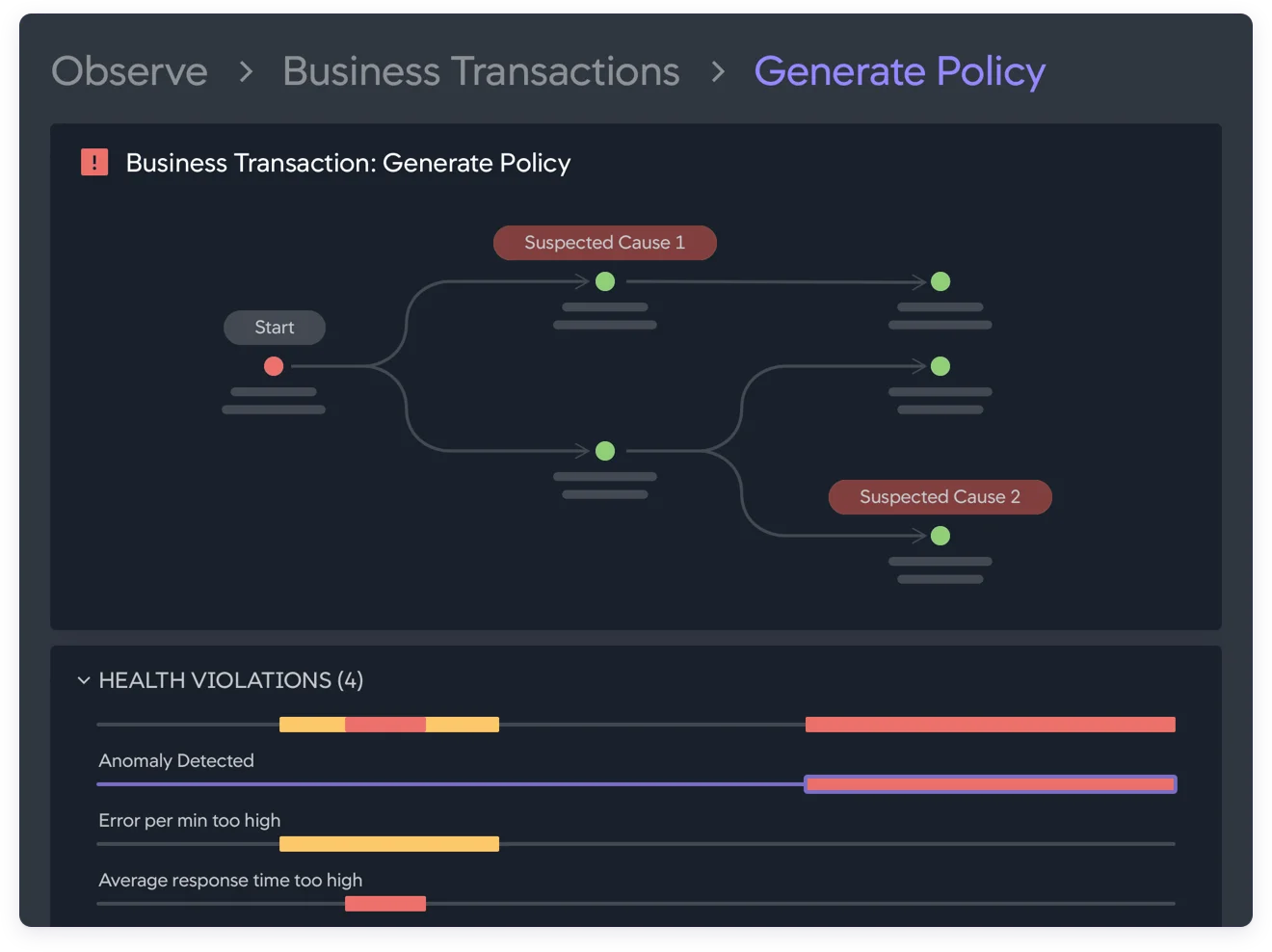
AppDynamics is a full-stack observability tool that offers end-to-end visibility.
Its observability features include infrastructure monitoring, application performance monitoring (APM), database monitoring, and end-user monitoring. It gives visibility into all infrastructure elements, including networks, servers, and containers. Its APM features detect performance issues and analyze the leading cause.
Database monitoring identifies performance issues in production environments. End-user monitoring tracks user experiences to pinpoint where users connect or fail to connect with your product.
AppDynamics also connects application performance with business results. This perspective helps teams make informed decisions that boost earnings and digital evolution. It addresses issues before they impact digital experiences, protecting crucial business metrics. Its AIOps capabilities enable rapid prioritization, isolation, and remediation of issues.
9. Sumo Logic
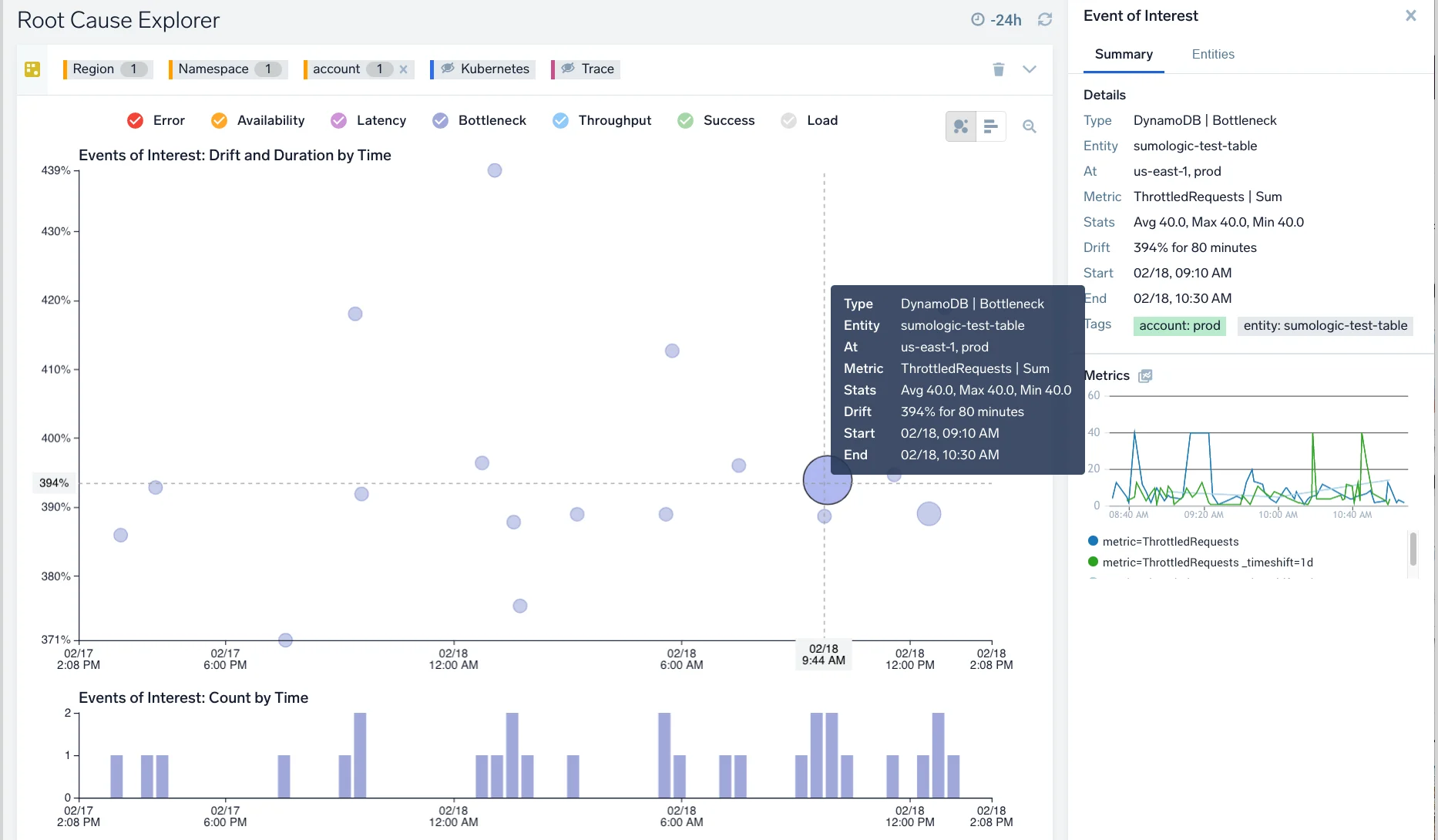
Sumo Logic is tailored for Kubernetes environments. It simplifies the collection and visualization of logs, metrics, and traces from Kubernetes clusters. This is essential for handling the complex nature of Kubernetes deployments.
The tool’s machine learning algorithms identify anomalies and uncover the root causes of issues. Its observability feature, Root Cause Explorer, tracks down the exact origin of issues. This leads to faster resolutions and less user disruption, which is crucial in environments with complex interdependencies and large amounts of data.
Sumo Logic also delivers real-time insights into application performance. This allows teams to quickly track performance metrics and resolve issues.
10. Cloudability
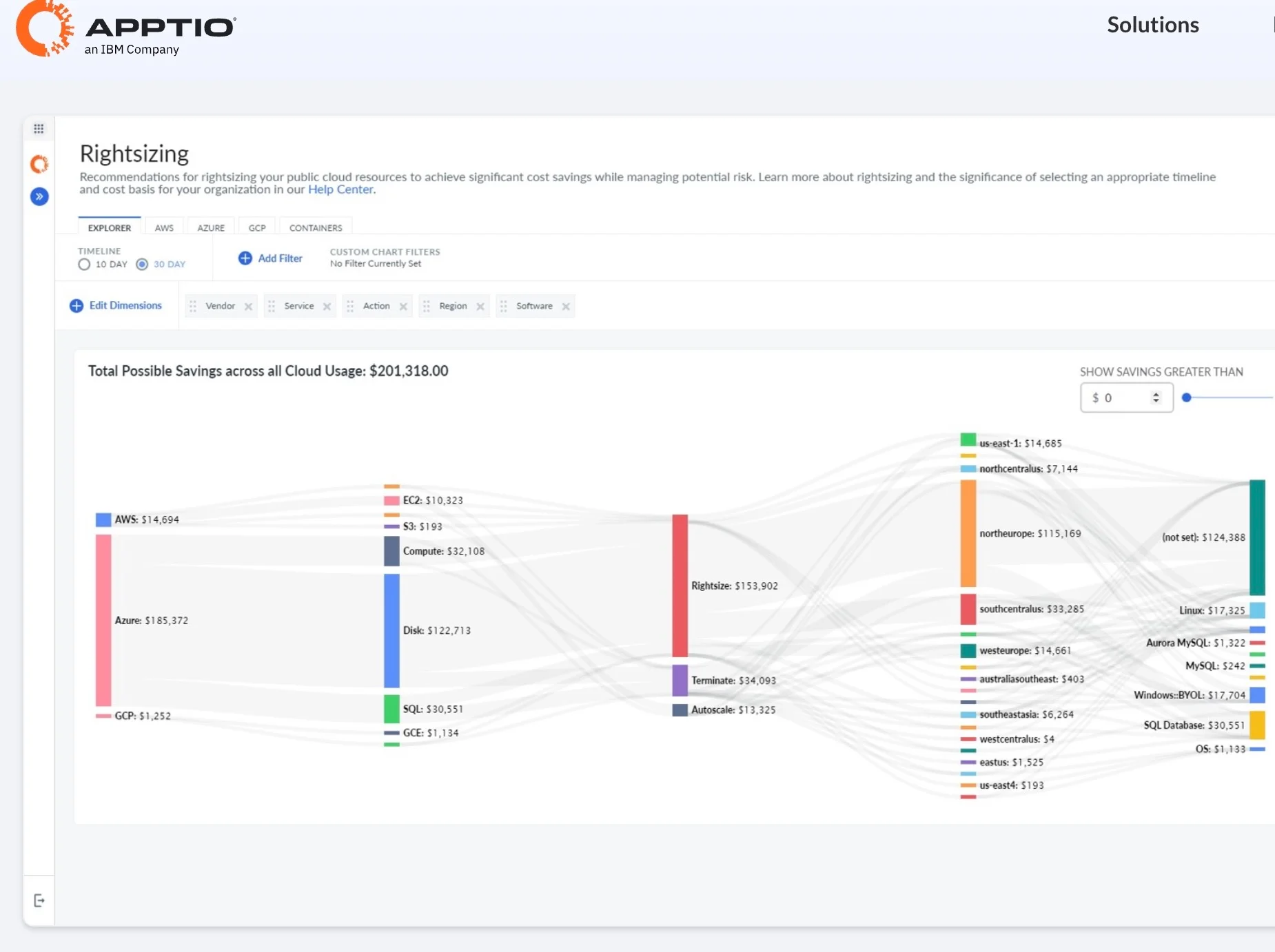
Cloudability offers detailed insights for rightsizing cloud resources. It identifies instances with low usage and suggests the best options to buy for Reserved Instances and Savings Plans.
Cloudability uses machine learning algorithms to identify unusual spending trends. It notifies users of sudden cost increases or changes in usage, enabling quick corrective actions. This feature encourages adherence to the budget and avoids cost escalation.
Its dashboards also offer insight into cloud usage across various teams and departments. The dashboards can be tailored to display critical metrics and KPIs, allowing teams to track performance and cost efficiency.
Cloudability is compatible with various cloud providers such as AWS, Azure, Google Cloud Platform, and IBM Cloud. This enables organizations to aggregate data in different cloud environments.
11. ServiceNow Cloud Observability
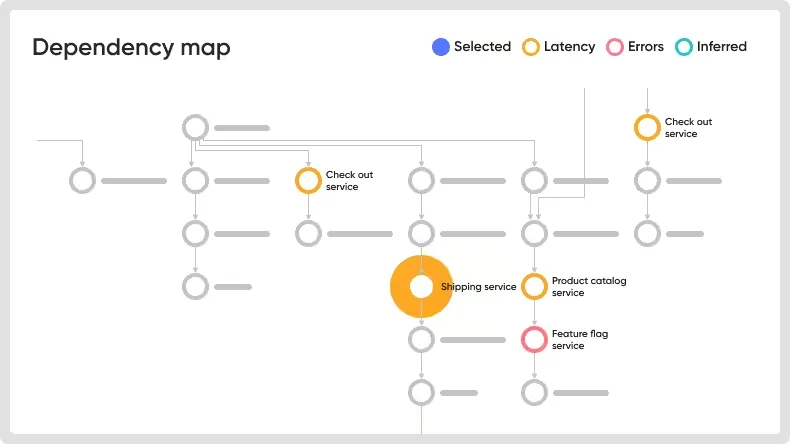
Formerly Lightstep, ServiceNow Cloud Observability is a distributed tracing and performance management platform.
Its distributed tracing tracks links between services, teams, and workloads. This helps identify performance bottlenecks and failures in complex systems. The platform partners with Nobl9, a reliability software that enables users to create Service Level Objectives (SLOs) using performance data. The data comes from traces and improves reliability and performance measurements.
The platform supports Unified Query Language (UQL) for performance analysis and monitoring. UQL also supports various metric types, including latency and error thresholds for performance monitoring.
ServiceNow Cloud Observability automates the discovery and monitoring of infrastructure components. Its AI-driven analytics offer actionable insights, helping companies maintain high performance and reliability. It also integrates with OpenTelemetry to further its observability capabilities across diverse environments.
Discover The Power Of Unified Cloud Management With CloudZero
The complexity of modern cloud environments demands a solution that can handle multiple aspects of cloud management. CloudZero integrates with your existing tools and workflows to offer a unified view of your cloud operations. This integration ensures you can manage costs and optimize performance on a single platform.

Want to see how CloudZero correlates cost data with usage to help you make better cloud decisions?  and improve your cloud management today with CloudZero.
and improve your cloud management today with CloudZero.

